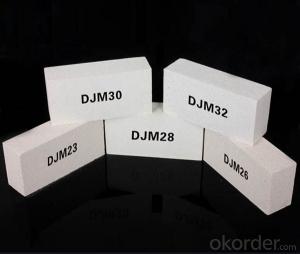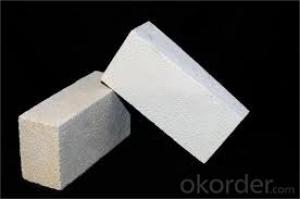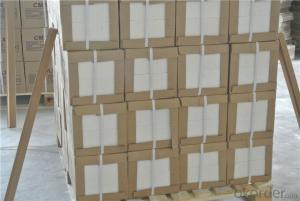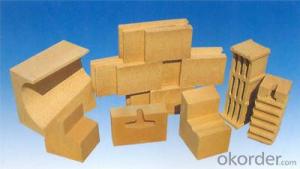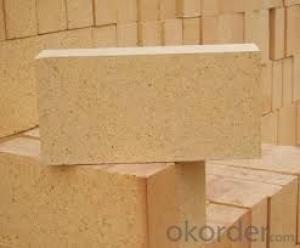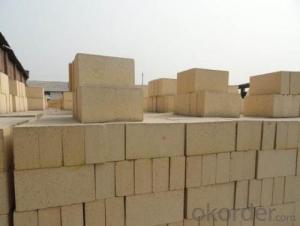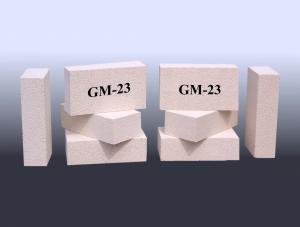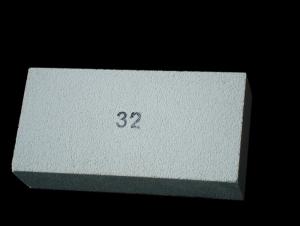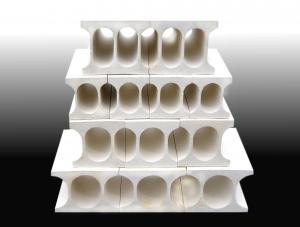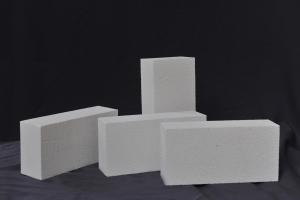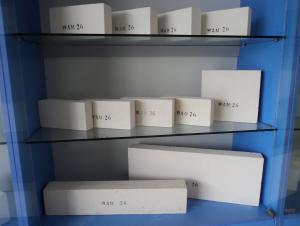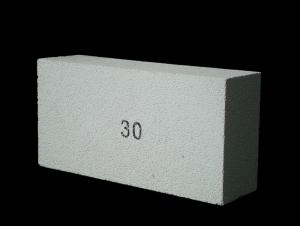High Alumina Insulating Fire Brick
- Loading Port:
- China main port
- Payment Terms:
- TT or LC
- Min Order Qty:
- 100 pc
- Supply Capability:
- 2000000 pc/month
OKorder Service Pledge
OKorder Financial Service
You Might Also Like
65% Al2O3 Min High Alumina Insulating Fire Brick
High alumina insulating fire brick is a kind of insulation material adopting organic matter as ignition loss substance in order to increase the porosity of refractory, which has such advantages as high porosity, small volume density, good insulation effect, high mechanical intensity, small thermal conductivity and long service life. For various industrial kilns & furnaces, it is a kind of essential refractory for energy saving and temperature preservation.
This series of High Alumina Insulating Fire Brick are made of selected high alumina bauxite, kaolin caly, hollow microsphere as the mian material.By shaping at high pressure and sintering at high temperature.
Product Applications:
High alumina insulating fire brick are ideal for use in the below applications
Building materials for blast furnace
Building materials for hot-blast stove
Building materials for coke oven
Building materials for steel making furnace
For construction material in steel industry
For ladle
Product Advantages:
CNBM has success in its High alumina insulating fire brick due to their cost-effectiveness and excellent insulating properties. The refractoriness of magnesia chrome bricks are more than 2000°C, and the refractory under load is a above 1550°C.Good steady volume in high temperature, the performance of meeting sudden cold and sudden hot is better than magnesia bricks.
Main Product Features:
Excellent thermal stability
High refractoriness under load
Chemical stability and anti-corrision
Small high temperature creep rate
Excellent thermal shock resistance
Product Specifications:
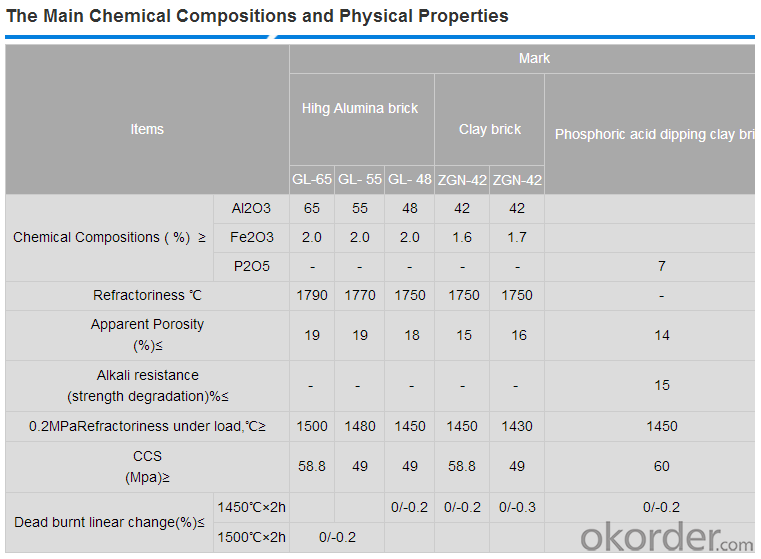
FAQ:
Q1: Are you a manufacture or trader?
A1: Factory+trade (mainly for manufacturing, also do some business of related products).
Q2: What's the MOQ of trial order?
A2: No limit,We can offer the best suggestions and solutions according to your requirements.
Q3: After an order is confirmed,when to deliver?
A3: According to your order quantity, normally, 15-25 days after deposit received.
Q4: Is your company accept customization?
A4: We have our own factories and excellent technical team, and we accept OEM service.
Product Picture
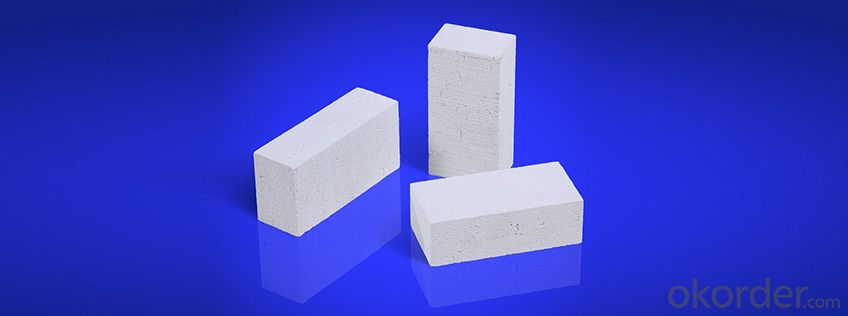
Produce Processing
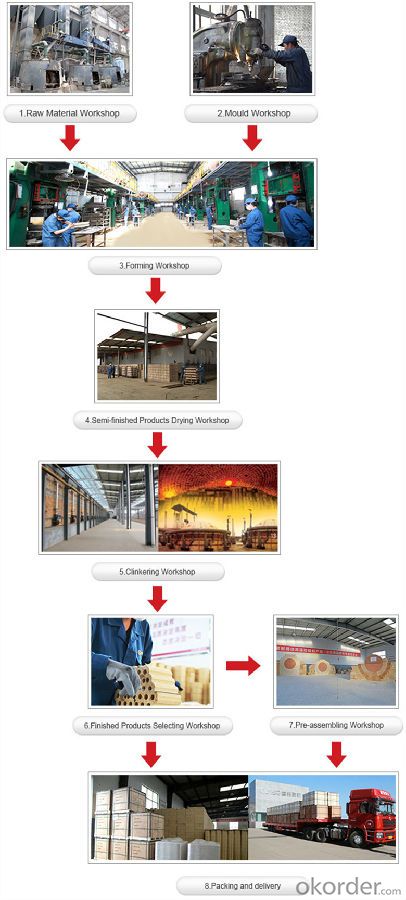
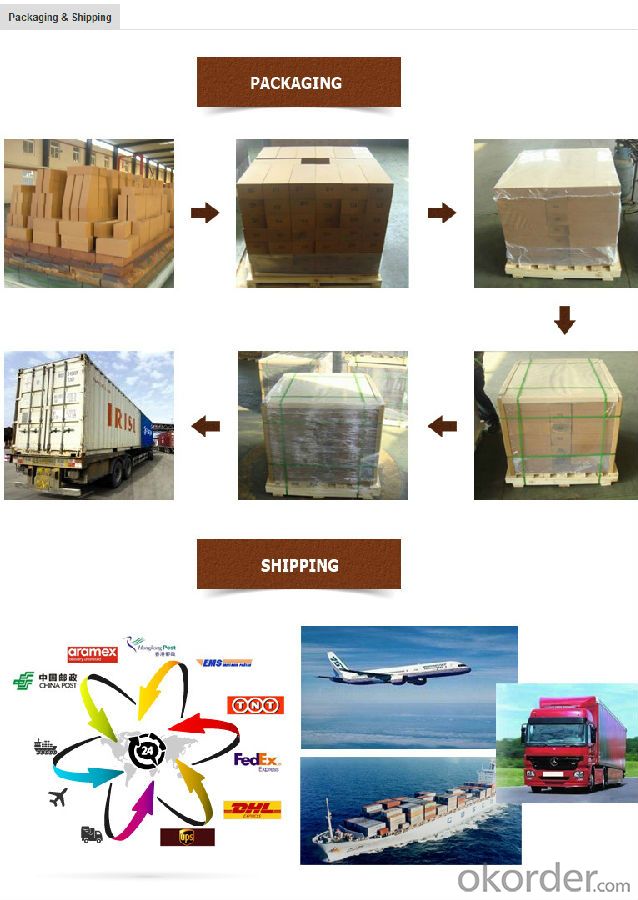
- Q: Can insulating fire bricks be used in refractory cement?
- Yes, insulating fire bricks can be used in refractory cement. Insulating fire bricks are specifically designed to withstand high temperatures and provide excellent insulation, while refractory cement is used to bind and seal refractory materials. By using insulating fire bricks in refractory cement, it can enhance the overall insulation properties and improve the performance of the cement in high-temperature applications.
- Q: How do insulating fire bricks compare to other types of refractory materials?
- IFBs, or insulating fire bricks, are refractory materials specially designed for their high insulating properties. They have several advantages when compared to standard fire bricks or castable refractories. First and foremost, IFBs have lower thermal conductivity than other refractory materials. This means they are more effective at preventing heat loss and providing insulation for high-temperature applications. Their low thermal conductivity allows them to retain heat within furnaces or kilns, resulting in reduced energy consumption and improved efficiency. Additionally, IFBs are lightweight, making them easier to handle, transport, and install. Their lightweight nature also reduces the overall weight of the refractory lining, which can be advantageous in certain situations. Another benefit of IFBs is their ability to withstand rapid temperature changes. They exhibit good thermal shock resistance, meaning they can endure sudden temperature fluctuations without cracking or spalling. This property is particularly valuable in applications with frequent heating and cooling cycles. Furthermore, IFBs possess a high level of chemical resistance. They can withstand corrosive environments and chemical attacks, making them suitable for various applications involving acids, alkalis, and other aggressive substances. However, IFBs do have limitations. Their lower density compared to standard fire bricks means they are less durable and have lower mechanical strength. Therefore, they might not be suitable for applications that require high load-bearing capacity or are prone to heavy abrasion. To summarize, IFBs offer excellent thermal insulation, lightweight properties, good thermal shock resistance, and high chemical resistance. Nonetheless, their lower density and reduced mechanical strength may restrict their usage in certain scenarios. It is crucial to carefully consider the specific requirements of the application before selecting IFBs or alternative refractory materials.
- Q: What is the typical flexural strength of an insulating fire brick?
- The typical flexural strength of an insulating fire brick can vary depending on the specific composition and manufacturing process of the brick. However, on average, insulating fire bricks have a flexural strength ranging from 2 to 10 megapascals (MPa). It is important to note that this is a general range and individual bricks may have slightly different flexural strengths. Insulating fire bricks are designed to provide thermal insulation and are commonly used in high-temperature applications such as furnaces, kilns, and fireplaces. The low thermal conductivity of these bricks allows them to effectively retain heat, making them suitable for environments where temperature control is important. Flexural strength refers to the ability of a material to resist deformation or breakage when subjected to bending or flexing forces. The higher the flexural strength, the more resistant the material is to bending or flexing. Insulating fire bricks are typically made from a mixture of lightweight aggregates, high-temperature binders, and other additives. This composition gives them their low thermal conductivity and insulating properties, but it also affects their mechanical strength, including the flexural strength. It is worth noting that while insulating fire bricks have relatively low flexural strength compared to other refractory materials, they are not typically subjected to significant bending or flexing forces in their intended applications. Instead, their main purpose is to provide thermal insulation, withstand high temperatures, and resist thermal shock. In summary, the typical flexural strength of an insulating fire brick ranges from 2 to 10 MPa, but this can vary depending on the specific composition and manufacturing process. These bricks are primarily designed for thermal insulation rather than high mechanical strength, and their low thermal conductivity makes them suitable for various high-temperature applications.
- Q: Can insulating fire bricks be used in the construction of fireplaces?
- Yes, insulating fire bricks can be used in the construction of fireplaces. Insulating fire bricks are designed to withstand high temperatures, making them an ideal choice for lining the interior of a fireplace. They have excellent thermal insulation properties, helping to retain heat within the fireplace and prevent excessive heat transfer to the surrounding structure. This not only improves the efficiency of the fireplace but also reduces the risk of damage to the surrounding walls. Insulating fire bricks are lightweight and easy to handle, making them convenient for construction purposes. Additionally, they are resistant to thermal shock, meaning they can withstand rapid temperature changes without cracking or breaking. Overall, insulating fire bricks are a reliable and effective choice for constructing fireplaces.
- Q: What are the sizes of lightweight thermal insulation bricks?
- The production of material ordinary lightweight insulating refractory brick with fireclay and high alumina high strength bead brick
- Q: Can insulating fire bricks be used in the construction of ladles?
- Insulating fire bricks are indeed suitable for ladle construction. These bricks are crafted from lightweight materials that possess exceptional thermal insulation properties. As a result, they are well-suited for situations where heat retention or control is paramount, such as in the creation of ladles for metal or glass industries. By utilizing insulating fire bricks, heat loss can be minimized, energy efficiency can be enhanced, and the desired temperature within the ladle can be maintained. Furthermore, their lightweight composition facilitates easier handling and installation during ladle construction. Consequently, insulating fire bricks are a viable choice for ladle construction, as they furnish the necessary thermal insulation and durability requisite for these high-temperature applications.
- Q: Do insulating fire bricks have a high thermal shock resistance?
- Insulating fire bricks are commonly known for their remarkable thermal shock resistance. They are specifically engineered to endure sudden temperature variations without any fractures or damage. Crafted from lightweight refractory materials with low thermal conductivity, these bricks effectively reduce heat transfer and prevent thermal strain. Furthermore, the firing process they undergo further enhances their ability to withstand thermal shocks. In summary, these bricks are perfect for situations where extreme temperature fluctuations are encountered, making them a dependable option for insulation in high-temperature surroundings.
- Q: Are insulating fire bricks resistant to electrical conductivity?
- Yes, insulating fire bricks are resistant to electrical conductivity.
- Q: Can insulating fire bricks reduce heating or cooling costs?
- Insulating fire bricks possess the ability to decrease heating or cooling expenses. These bricks are specially designed to exhibit a high level of thermal insulation, meaning they possess low thermal conductivity and can effectively hinder the transfer of heat between a building's interior and exterior. In the construction of fireplaces, ovens, or kilns, the utilization of insulating fire bricks aids in retaining heat within these structures. This enables them to achieve and maintain higher temperatures while consuming less energy. Consequently, this leads to substantial savings on heating costs, as the desired temperature can be achieved with reduced energy usage. Similarly, when employed in the construction of walls, insulating fire bricks serve to minimize heat transfer between a building's inside and outside. This results in decreased heating or cooling requirements, as the insulation helps to maintain a consistent indoor temperature. Subsequently, less energy is needed to heat or cool the building, resulting in lower energy bills and reduced overall heating or cooling expenses. It should be noted that the effectiveness of insulating fire bricks in reducing heating or cooling costs can vary based on factors such as overall building insulation, structure size and design, and climate conditions. Nevertheless, in general, the utilization of insulating fire bricks can contribute to energy efficiency and cost savings in heating or cooling systems.
- Q: What is the typical open porosity of an insulating fire brick?
- The typical open porosity of an insulating fire brick can vary depending on the specific type and manufacturer. However, on average, insulating fire bricks have an open porosity ranging from 45% to 70%. This means that approximately 45% to 70% of the volume of the brick is made up of interconnected voids or pores. The open porosity is an important characteristic of insulating fire bricks as it directly affects their thermal insulation properties. The higher the open porosity, the better the insulating capabilities of the brick, as the voids act as barriers to heat transfer. Insulating fire bricks with lower open porosity are often denser and more durable, but they may have reduced thermal insulation properties.
Send your message to us
High Alumina Insulating Fire Brick
- Loading Port:
- China main port
- Payment Terms:
- TT or LC
- Min Order Qty:
- 100 pc
- Supply Capability:
- 2000000 pc/month
OKorder Service Pledge
OKorder Financial Service
Similar products
Hot products
Hot Searches
Related keywords

